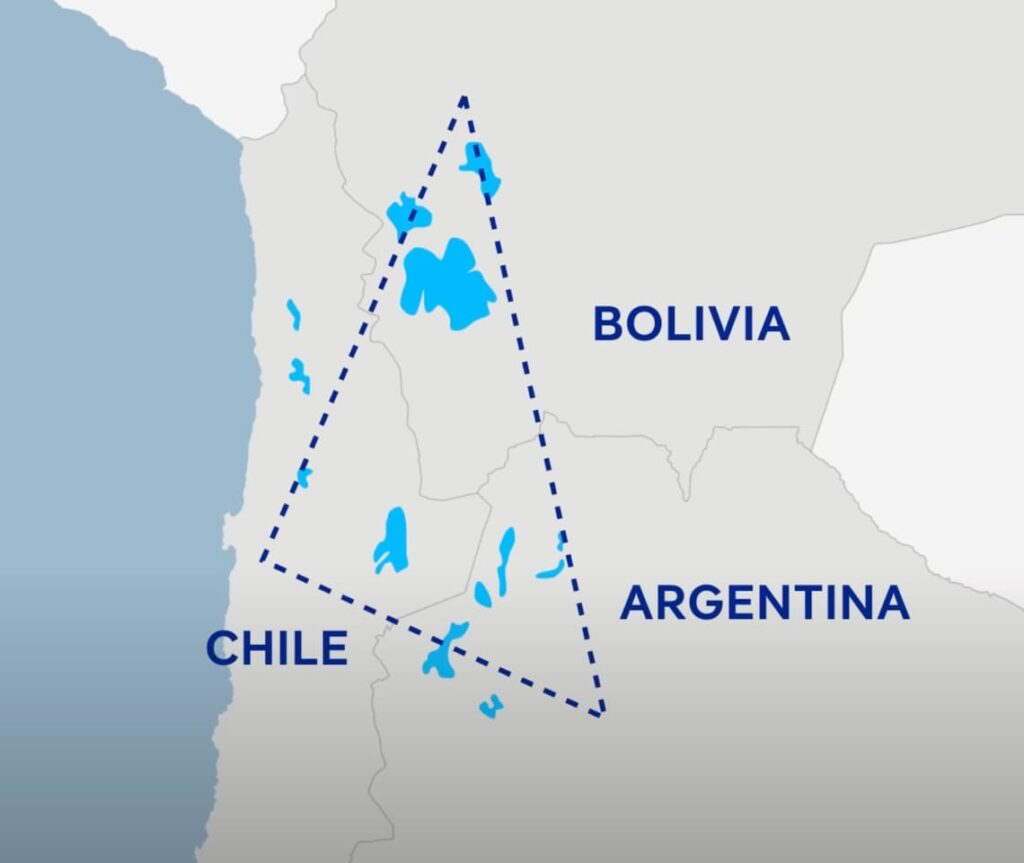Argentinas libertarian change is a.o. inspired by Georgias similar during the Rose Revolution and is also the source of inspiration for Donald Trumps upcoming government. Argentinas success is however also of importance to IMF's general credit policies going forward.
Argentinas "Gaucho" economy is unique
It is often said that there are four types of economies: developed economies, developing economies, Japan, and Argentina. While Japan's economy has been characterized by a persistent deflationary spiral, Argentina's "Gaucho" economy is known for its wild fluctuations.
Javier Milei was elected on a libertarian shock plan ...
When Javier Milei was elected in December 2023, it was on a libertarian austerity plan for Argentina’s economy, reminiscent of Georgia’s reforms under Saakashvili in the 2000s, as discussed in the previous blog post. Milei's strategy is built on significant privatizations and decoupling from China in favor of the United States, including replacing the peso with the U.S. dollar.
The status of the "rescue plan" and the economy today is mixed. The plan's objective is to rebuild fundamental monetary trust among Argentinians. The challenge lies in achieving a long-term goal within a short timeframe and maintaining it over many years.
- Milei’s plan began with the announcement of privatizations. To date, sale processes have been initiated for over 60 state-owned enterprises, including YPF (the national oil company) and Aerolíneas Argentinas (the national airline).
- Subsequently, the plan removed all subsidies for public transportation, fuel, and electricity. This initially caused inflation to surge.
- The inflationary pressure, however, was countered by substantial cuts to public pensions and social benefits, along with the elimination of numerous public sector jobs and institutions. This was further reinforced by a freeze on all public investments, spanning real estate, roads, and infrastructure.
... To Reset Consumer Expectations and Halt the Inflationary Spiral
The plan is a “shock therapy” for the economy, aimed at resetting consumer and business expectations to stop the inflationary spiral.
- The "shock" must, however, be limited to a duration that avoids triggering a depression. Therefore, Milei’s plan emphasizes timing and communication. He needs early signs that the plan is working as intended, through organic means.
So far, as expected, the "shock" has led to a recession. However, vague signs of improvement are emerging. Key growth components include:
- Private and Public Spending: In Milei's view, this was the primary driver of the current crisis, leading to the debt spiral.
- It was, therefore, crucial to allow real wages to decline.
- Public spending has dropped by approximately 30% since the start of the year.
- Net Exports: While positive, they have not yet shown a clear growth trajectory, despite the peso depreciating to nearly one-third of its value a year ago.
The Plan Also Aims to Align Argentina with the U.S.
Before Milei’s election, the central bank maintained an artificially high peso exchange rate to curb inflation. However, this made Argentina’s exports unnaturally expensive, counteracting export growth.
- The risk of escalating hyperinflation underpins Milei’s ambition to replace the peso with the U.S. dollar, integrating Argentina’s economy with the world’s largest. This alignment is expected to stabilize the economy.
- One central bank issue was the public’s practice of exchanging pesos for U.S. dollars and storing them privately (“under the mattress”), reflecting a lack of financial trust in banks. This may now be shifting, as private USD deposits have increased by 40% since Milei took office. In September, deposits reached their highest level since 2019.
- What makes Milei’s plan unusual is the opening of markets and removal of protectionist policies. Normally, developing countries protect their foreign reserves against imports to support nascent export recoveries.
- Milei believes in market forces and rebuilding trade trust with the U.S. and the West. As a result, he withdrew Argentina's participation in BRICS.
- This approach contrasts sharply with the global trend of "trade fragmentation," where most countries are moving in the opposite direction.
For now there are Early Signs that the Plan's working ...
Since April, inflation has been decreasing, now standing at around 210% annually, although it remains the highest in the world.
- However, the improvement is not yet felt by the population, where welfare has rapidly declined. The poverty rate for the first half of 2024 reached 53%, a sharp rise from 42% in the second half of 2023.
- This has particularly affected revenue in sectors such as restaurants, subscription services, and clothing. A wave of bankruptcies threatens if Milei’s “shock therapy” continues for too long.
Milei believes, however, that Argentina is on the verge of a "V-shaped" recovery. When adjusted for abnormal export factors, like the poor agricultural harvest in 2023, signs of rising exports remain fragile.
- GDP growth improved in the first half of the year and is expected to reach a full-year contraction of “only” -4.4%, followed by growth of +6% in 2025, driven by investments, exports, and to some extent, private consumption.
... To the Satisfaction of International Lenders
Overall, both the IMF and international rating agencies assess that the implementation of the plan is progressing reasonably well.
- The IMF’s stance is particularly important, as Argentina is its largest borrower ever, as noted earlier. Despite Argentina having been in recession for 25 of the last 70 years and defaulting on its foreign debt three times since 2001, the IMF remains cautiously optimistic.
- Foreign banks and rating agencies are also more optimistic about the future. In October, Argentina reached its lowest level in five years on JP Morgan’s country risk index.
However, public patience is starting to wear thin...
Milei’s support among the population has fallen, but it is far from disastrous. This is unusual for Argentina, likely due to the country having tried many other economic “cures” that produced poor results.
- In 2025, positive results must become solid. There are high expectations, driven by a significant rise in exports. However, earning opportunities are currently declining. Additionally, this will require a more conciliatory foreign and trade policy from Milei.
- One of Argentina's major export potentials is lithium. However, increased extraction requires significant investments, which Argentina has cut back on, as mentioned earlier.
- Moreover, Milei campaigned on distancing the country from China and the Belt and Road Initiative (BRI). But China accounts for 64% of the global import of lithium carbonate. The price has fallen to levels seen at the beginning of 2021, approximately one-eighth of the peak in late 2022. China has also been the largest investor in Argentina’s lithium extraction projects.
... and It Is the Mindset of the Population That Must Drive Argentina’s Economy Forward
Argentina’s economy has often shown early signs of recovery and optimism following contractionary economic cures. However, each time, the population has chosen a new government that promotes a consumption boom, leading to increased debt.
- Milei’s greatest challenge is thus to change the “Gaucho” mindset among the population. Patience and restraint must be instilled in the democratic process for many years to come if Argentina is to break free from its dependence on international loans and rebuild financial trust.
- This is a significant and sustained task. If successful, it will inspire both developing nations and the IMF. If it fails, Argentina’s crisis will deepen and become even more chronic.
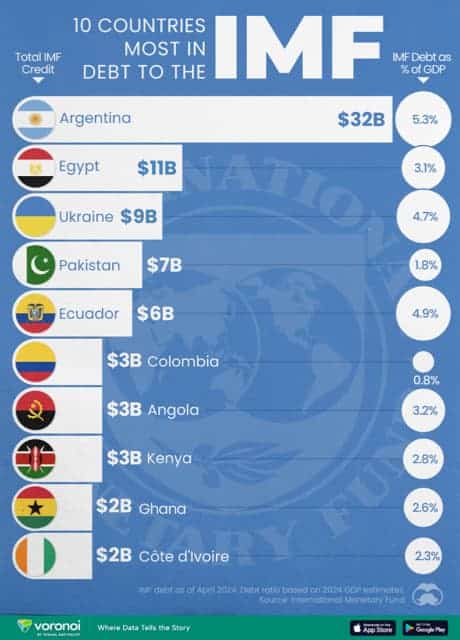
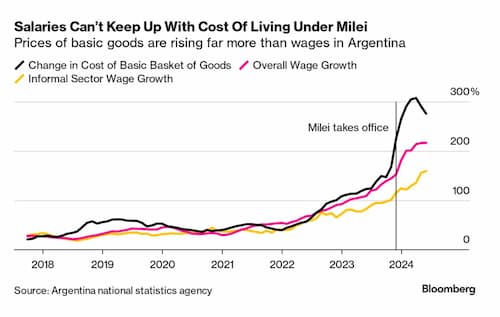
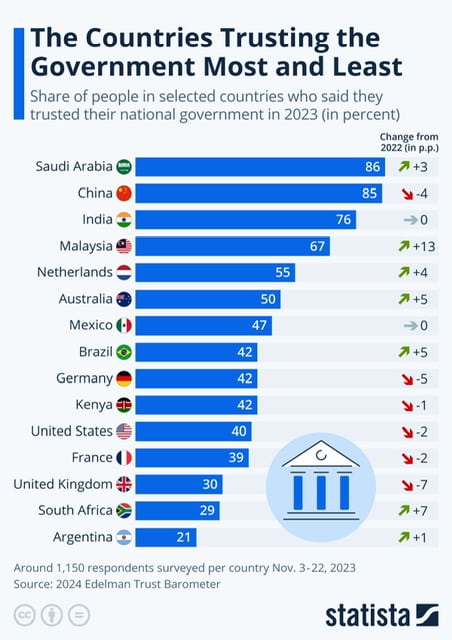
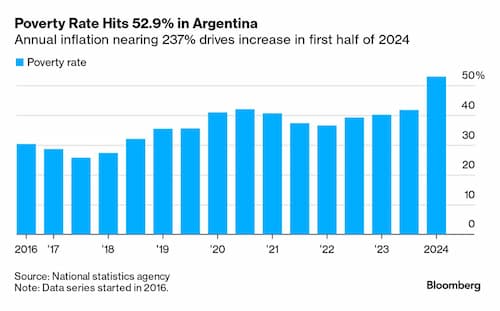
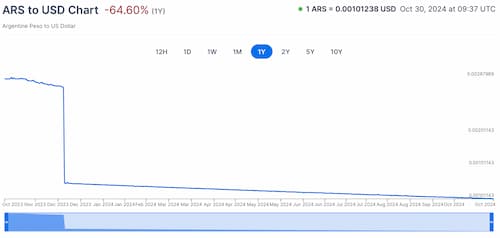
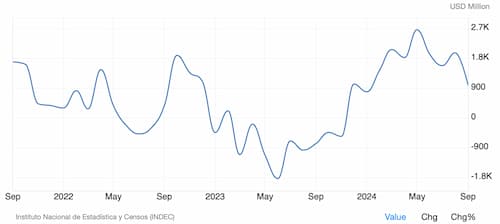
Argentinas export may be improving
